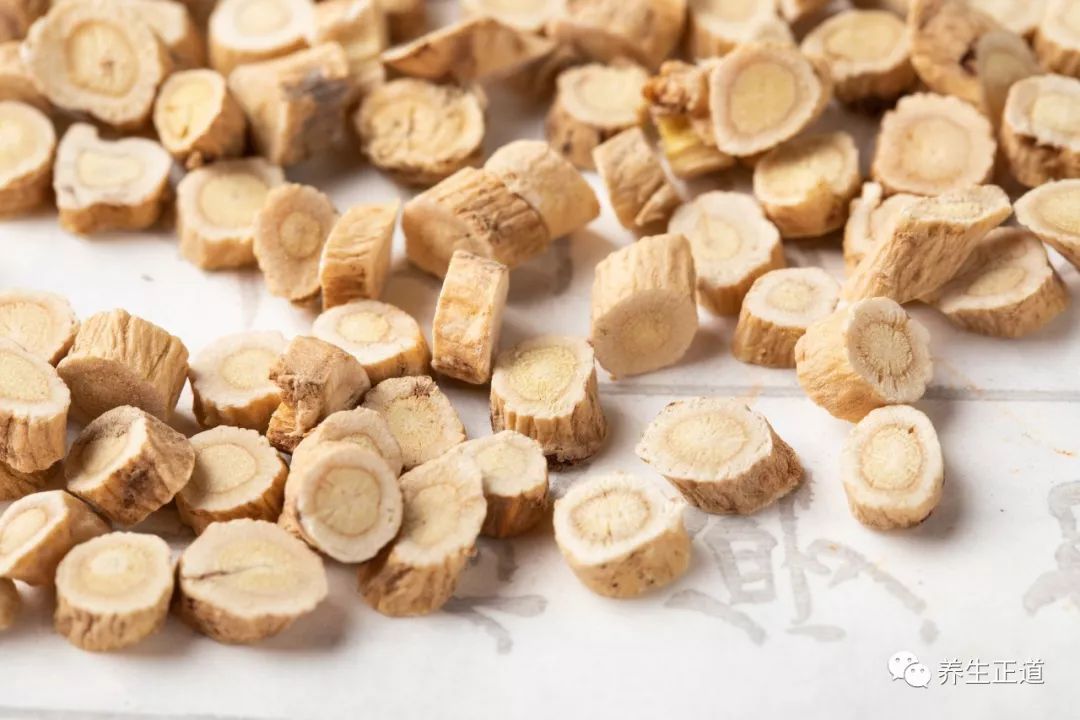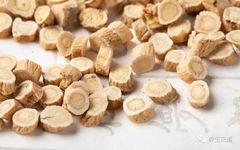↑ Click the above 【Health Preservation Path】 to follow us ↑
Abstract:
“Cold and heat alternating” is a type of fever characterized by alternating episodes of fever and chills. “Cold and heat alternating, with profuse sweating; or only heat without cold, sweating and heat relief, then suddenly both heat and sweating, eyes bulging, dangerously wanting to collapse; or shortness of breath, or palpitations, or qi deficiency unable to breathe.”
 Lai Fu Decoction (来复汤)
Lai Fu Decoction (来复汤)
Author: Guo Yonglai
In the spring of 1973, my mother, aged 59, suddenly fell ill with a strange disease. Initially, she experienced chills all over her body, and about two hours later, she began to sweat and felt hot and restless. Even when covered with several blankets during cold episodes, she still shivered, and during hot episodes, she felt hot even in light clothing. After the cold and heat episodes, her whole body ached. At first, the episodes occurred every ten days, then every few days, and later every one or two days, with no fixed timing. The pulse was thin and weak, and there were no other obvious symptoms. This seemed somewhat similar to malaria, but the episodes were not regular, clearly indicating it was not malaria.

Image: Huang Qi (Astragalus)
Initially, I intended to use 30g of Shan Yao (Chinese Yam), but due to a lack of herbs, I only used half. After taking two doses, she was completely cured. This was recorded at the time, and I did not encounter similar cases again until 20 years later when I saw another case at the Bajiazi Hospital, which I recorded for comparative study.On July 12, 1994, the patient Zhang Xiaofeng, female, 24 years old, tall and thin, had been suffering from alternating cold and heat for over a year, with no cure despite various treatments. The illness began a year ago after a cesarean section infection, leading to high fever, which was cured after hospitalization, but she then developed this strange illness. She experienced chills followed by heat, shivering during cold episodes, and restlessness with sweating during hot episodes. Sometimes the episodes occurred for several consecutive days, and sometimes multiple times a day, with no fixed pattern. Over the past year, various tests were conducted, but no cause was found. In addition to the above symptoms, she also had reduced appetite, restless sleep, and dizziness. This condition seemed to belong to the TCM Shao Yang syndrome, but since it had lasted over a year, it could not be treated as a typical Shao Yang syndrome with Xiao Chai Hu Decoction. Suddenly, I recalled my mother’s condition from 20 years ago, which was very similar, so I prescribed the original formula of Zhang Xichun’s Lai Fu Decoction, changing the Shan Yao to 30g, and instructed her to take three doses.During the second consultation, after taking the three doses, the fever was gone, but the chills persisted, and her sleep seemed slightly improved. It appeared that this formula did not completely match the patient, so I modified it using the Liu Wei Di Huang Decoction (Six-Ingredient Rehmannia Decoction) with modifications from the collection of Yue Meizhong’s medical experiences, adding Chai Hu (Bupleurum), Bai Shao (White Peony), and Gui (Cinnamon). The prescription was: Shu Di Huang (Rehmannia) 30g, Shan Yao (Chinese Yam) 30g, Fu Ling (Poria) 15g, Ze Xie (Alisma) 15g, Dan Pi (Moutan) 10g, Shan Yao (Chinese Yam) 30g, Chai Hu (Bupleurum) 50g, Bai Shao (White Peony) 30g, Rou Gui (Cinnamon) 5g, Wu Wei Zi (Schisandra) 10g, Huang Qi (Astragalus) 50g, Long Gu (Dragon Bone) 20g, Mu Li (Oyster Shell) 20g. Another three doses were given.During the third consultation, after taking the above formula, both cold and heat symptoms were eliminated, but there was still a slight chill and heat the day before. Now her appetite had greatly increased, and her sleep was peaceful, with a constant desire to sleep. Since the formula was effective, I prescribed three more doses of the original formula.During the fourth consultation, there were no more occurrences of cold and heat, her appetite was good, and she had a strong desire to eat. Her sleep was also peaceful, but she experienced slight headaches in the past two days, which were not severe. I removed Huang Qi, Long Gu, and Mu Li from the original formula, halved the other herbs, and prescribed four more doses to consolidate the treatment.Notes
During the first consultation, the patient did not mention her symptoms. Due to the rapid pulse, I thought it was an external febrile disease, so I asked if she had any subjective symptoms of cold and heat. The patient was delighted that I hit the nail on the head and detailed her condition, expressing great trust in my treatment. There were no other typical symptoms, and the tongue coating was also a normal pale white coating. Since the Lai Fu Decoction did not yield ideal results during the first consultation, I recalled the modified Liu Wei Di Huang Decoction mentioned in Yue Meizhong’s medical experience collection, and combined the two formulas, ultimately achieving good results.
Lai Fu Decoction comes from the book “Medical Records of Traditional Chinese Medicine and Western Medicine” and consists of 120g of Shan Yao (Chinese Yam), 30g of Long Gu (Dragon Bone), 30g of Mu Li (Oyster Shell), 18g of Bai Shao (White Peony), 12g of Ye Tai Shen (Wild Ginseng), and 6g of Gan Cao (Licorice). It is used to treat symptoms of cold and warm external pathogens, and for patients who cannot recover after major illnesses, with symptoms of alternating cold and heat, profuse sweating, or only heat without cold, sweating and heat relief, suddenly both heat and sweating, bulging eyes, dangerously wanting to collapse, or shortness of breath, or palpitations, or qi deficiency unable to breathe. If any of these symptoms are present, it is advisable to take it urgently. Zhang said: “When a person’s vital energy is lost, it is always lost in the liver. Therefore, when a person is extremely deficient, the liver wind must first move. When the liver wind moves, it indicates a sign of the liver wind wanting to collapse. The liver and gallbladder are interdependent; the gallbladder is Shao Yang, and when there is a disease, it manifests as alternating cold and heat. The liver is Jue Yin, and extreme deficiency also leads to alternating cold and heat, resulting in sweating.”Shan Yao can both restrain sweating and nourish the liver, making it most effective for those with extreme liver deficiency and wanting to collapse.

Image: Gan Cao (Licorice)
In treating this patient, although I could not achieve a cure in one dose, I did manage to eliminate the symptoms after several doses, demonstrating that the ancient experiences derived from practice are invaluable. If there were no discussions from the above-mentioned masters, we might have to regard this as a strange case. If we had to rely solely on our own exploration for treatment, the effectiveness would be predictable. Although the patient’s symptoms did not completely align with the above two discussions, they were similar, so I used this “similar formula” for treatment. Fortunately, the patient has recovered, and today is the final consultation, so I recorded this for future research.Postscript: Three years later, I left Bajiazi, and during this period, the illness did not recur (recorded on July 26, 1994, organized on August 27, 2001).Appendix: In 2006, I was in Andi, where a woman named Lu Chengxiang, over 50 years old, experienced alternating cold and heat between 12 and 1 at night. She said that the illness suddenly occurred while she was sleeping, feeling cold even under several layers of cotton blankets, then hot after the cold, and after the illness, she felt weak the next day, with no fixed timing for the episodes. After many doctors treated her for a year without effect, I used the above experience without hesitation and treated her with these two formulas, resulting in a cure. This is the third case I have seen in 40 years regarding this condition.
Recommended Reading
“A True Renowned TCM Physician: Clinical Cases of Xiong Jibai”
This book selects clinical cases that reflect Professor Xiong Jibai’s academic thoughts, clinical thinking, and clinical experience, covering nearly 100 diseases in internal medicine, surgery, gynecology, pediatrics, emergency medicine, and difficult and strange diseases. It is hoped that Professor Xiong Jibai’s rich clinical experience can be shared with those aspiring to become qualified, good, and renowned TCM practitioners.

Health Preservation Path
Copyright Statement
This article is selected from “Xinglin Jiye”,by Guo Yonglai, published by China Traditional Chinese Medicine Press, copyright belongs to the relevant rights holders.All images are copyright images purchased by the publisher from the photography network, please do not steal images.
For commercial cooperation or submissions: [email protected]
 Click “Read the Original” to purchase the book on the WeChat Youzan platform
Click “Read the Original” to purchase the book on the WeChat Youzan platform

